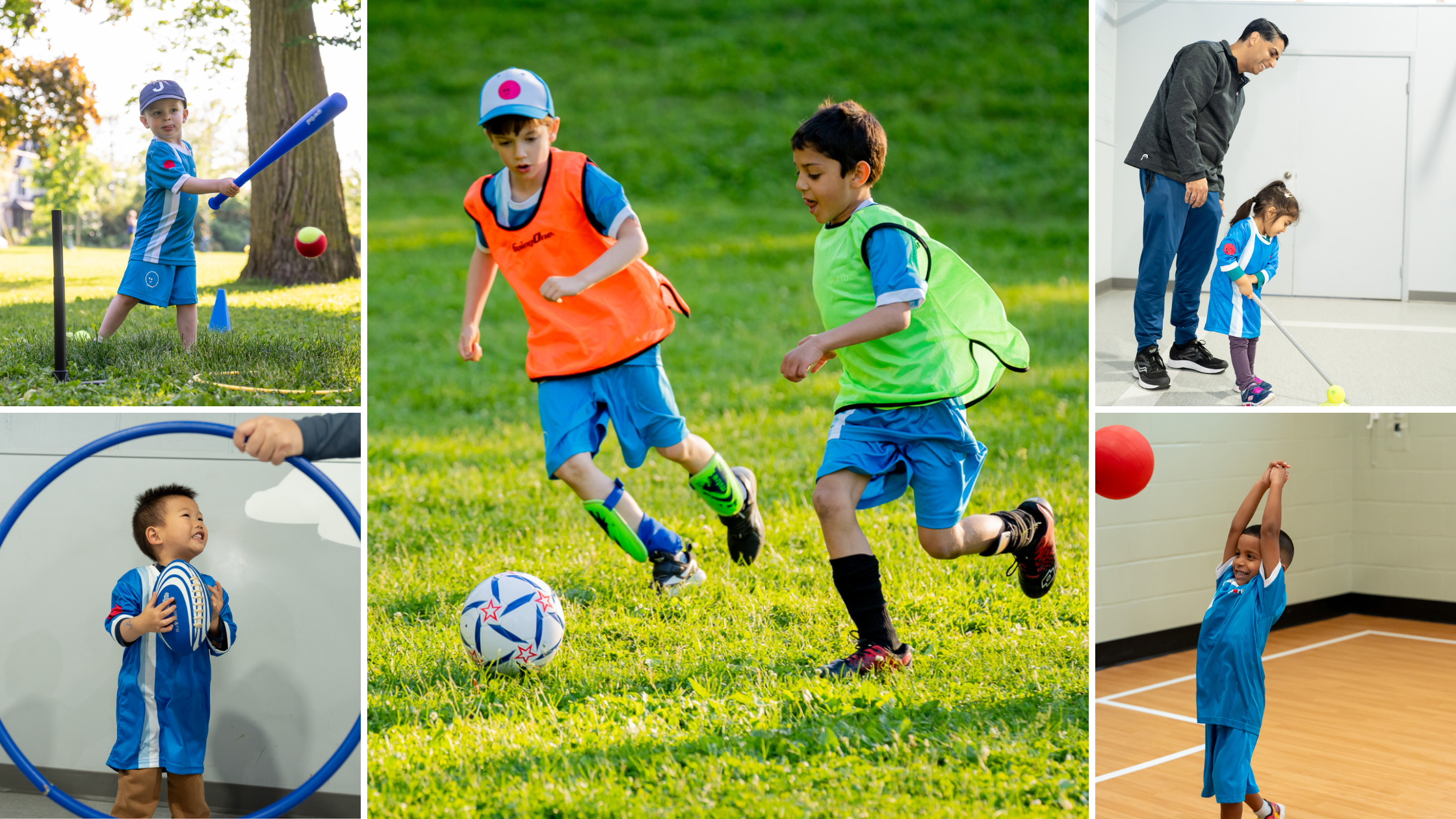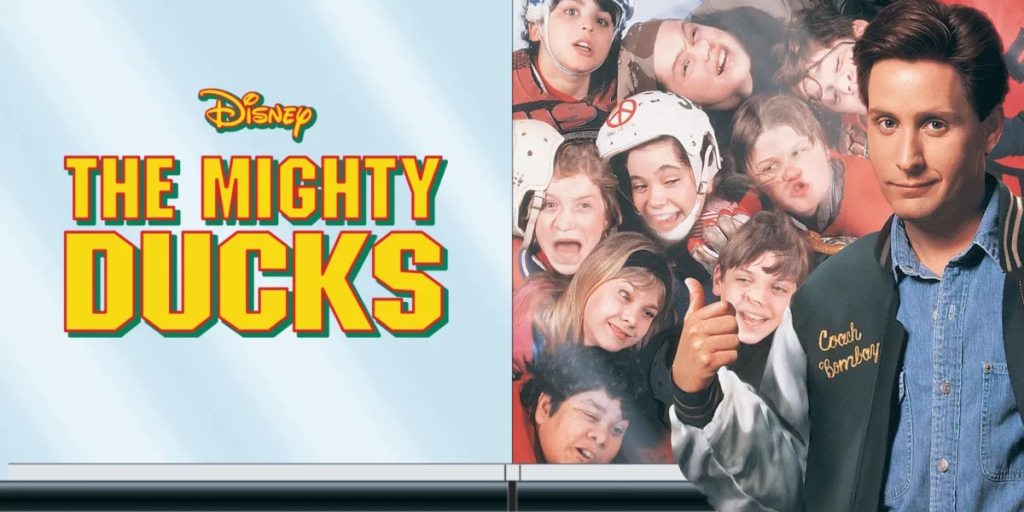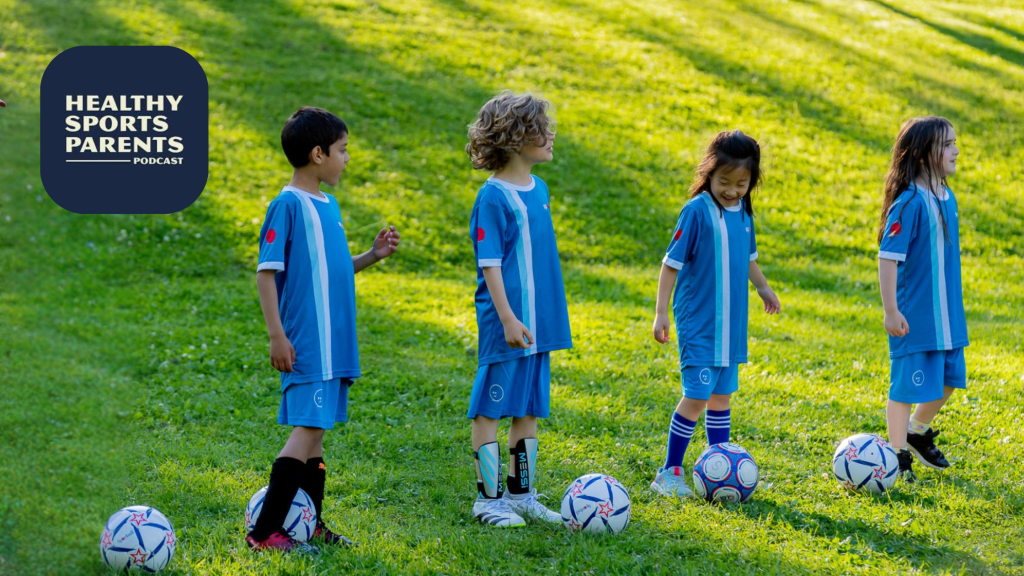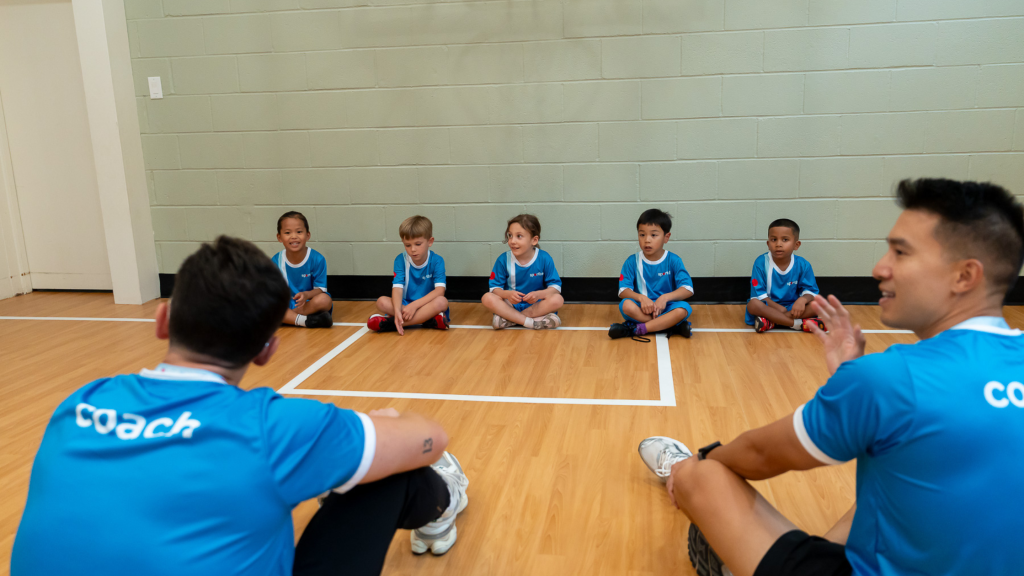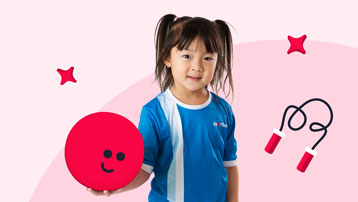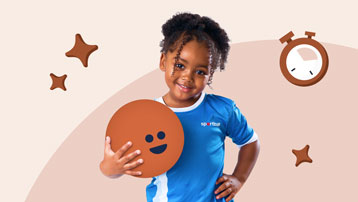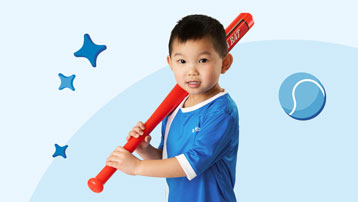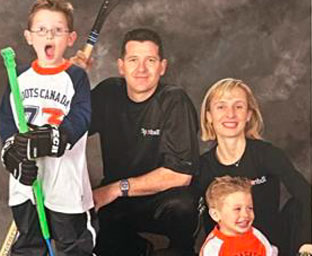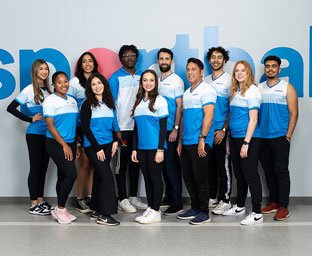Spoiler alert: Encouraging a variety of sports rather than early specialization is your child’s ticket to physical literacy and a life-long love of movement.
Why playing multiple sports is more than just fun
As coaches, we’ve seen it: kids who stick to one sport from the get-go sometimes burn out, get bored, and become susceptible to injuries from doing the same repetitive motions over and over. Meanwhile kids who play a variety of sports are often the ones who love the game, switch easily between skills, and grow into lifelong players (hello pro-athletes who were multi-sport kiddos: Wayne Gretzky, Michael Jordan, and Bo Jackson to name a few).
Here’s what the research says:
- JAMA Pediatrics recommends sampling sports, rather than specializing early.1
- Pubmed studies show kids exposed to multiple sports develop stronger neuromuscular control (better movement patterns, fewer injuries).2
- The American Academy of Pediatrics recommends early diversification.3
How many sports should kids play?
If we had to put a number on it we’d say: up to 3 is a sweet spot for most children under 12 years.
Here’s why that works so well: Multi-sport means your child can explore interests, build movement skills broadly, and avoid over-use of the same muscles. While no study definitively says, “Every kid should play exactly 3 sports,” the evidence strongly favors participating in more than one sport (i.e., sampling) during youth development.
How to build a smart sports schedule (without over-engineering it)
You don’t need a spreadsheet or a sports scientist to get this right. A few simple principles keep kids active, healthy, and having fun.
- One sport per season is enough for most kids – Young children don’t need to stack multiple sports simultaneously. Focusing on one activity at a time lets them build skills without running ragged between practices. Save the multi-sport juggling for older kids who genuinely want it.
- Build in at least one true rest day per week – Rest means no structured athletic activity at all. Playing in the backyard doesn’t count as rest, but it’s not the same as a scheduled practice either. Bodies grow and recover during downtime, not during training.
- Take an off-season – Year-round single-sport training is a path to burnout. Two to three months away from a primary sport gives kids a physical and mental reset.
- Let unstructured play count – Not every minute of physical activity needs coaching. Kids shooting hoops in the driveway, playing tag at recess, or biking around the neighbourhood are developing coordination, creativity, and a genuine love of movement without any adult agenda.
- Watch your child, not the calendar – The best indicator of a healthy schedule is your kid’s attitude. If they’re eager, sleeping well, and still have energy for other parts of life, the balance is probably right. If they’re dragging, dreading, or constantly sore, something needs to change regardless of what the schedule looks like on paper.
Here’s a real-world plan that works:
Switch-up it up
- Multi-sport mix (Save the carpooling and sample up to 8 different sports in Sportball’s signature Multi-Sport programs!)
- Team sports when your child is ready (soccer, t-ball)
Coach tip: Keep one day per week for “just play”unstructured movement: skipping drills, chasing friends, neighborhood walks, etc.
Warning signs that your child has over specialized in sports
Early sport specialization can lead to physical and emotional burnout. Parents should watch for these signs that a child may be playing one sport too intensely or too exclusively.
- Constant fatigue and complaining about practice – If your child seems tired even after rest days or regularly dreads going to training, their body and mind may be overtaxed. Occasional tiredness is normal, but persistent exhaustion that doesn’t improve with sleep signals a recovery problem.
- Limited free time or rest days – A healthy youth sports schedule includes true rest days with zero structured athletic activity. If your child’s calendar has no breaks, no off-season, and no time for unstructured play, the training load is likely too high for a developing body.
- Same motions and same muscles feeling tight or sore – Repetitive movement patterns without variety cause specific muscle groups to stay under constant strain. A young pitcher with a chronically tight shoulder or a gymnast with persistent wrist pain is showing signs of overuse from doing the same movements too often.
- Repeated injuries – One injury can be a fluke. Multiple injuries to the same area indicate that the body isn’t getting adequate recovery time between training sessions. Growing bodies need variety to develop evenly and avoid stress concentrations.
- Limited interest in other activities – Children who resist trying new sports, avoid unstructured play, or have no hobbies outside their primary sport may be missing important developmental experiences. Multi-sport exposure builds broader athletic skills and keeps physical activity feeling fresh.
- Lack of excitement: sports feel like a job – When a child says “I have to go to practice” instead of “I get to go,” something has shifted. Sport should feel like play. Kids who count down until the season ends or show relief when practice is cancelled have often lost the intrinsic joy that keeps young athletes engaged long-term.

At Sportball we’re all about purposeful fun
Our Multi-Sport classes expose children to a variety of sports: hockey, basketball, tennis, soccer, football, volleyball, golf, cricket, baseball, and more. That variety builds skills, confidence, and helps kids discover what they love.
Our mission? To blend fun with methodology and create a love of movement for life.
The bottom line
- Encourage your child to participate in more than one sport or give a multi-sport program a try.
- Aim for variety over specialization for as long as possible, especially under 12 years of age.
- Watch for signs of burnout – decreased motivation and loss of joy, drop in performance or mood, persistent fatigue, etc.
- Remember: the goal isn’t to produce a professional athlete; it’s to build a healthy, confident child who is physically capable and intrinsically motivated to stay active.
References
1 Moreno, M. A. (2011). Children and organized sports: Encourage your child to experience a variety of sports. JAMA Pediatrics. https://jamanetwork.com/journals/jamapediatrics/fullarticle/384448
2 Brenner, J. S., LaBella, C. R., Brooks, M. A., Diamond, A., Hennrikus, W., Weiss Kelly, A. K., … Council on Sports Medicine and Fitness. (2016). Sports specialization and intensive training in young athletes. Pediatrics, 138(3), e20162148. https://pmc.ncbi.nlm.nih.gov/articles/PMC5857728/
3 DiStefano, L. J., Beltz, E. M., Root, H. J., Martinez, J. C., Houghton, A., Taranto, N., … Trojian, T. H. (2018). Sport sampling is associated with improved landing technique in youth athletes.AAP, 10(2), 160–168.https://publications.aap.org/pediatrics/article/138/3/e20162148/52612/Sports-Specialization-and-Intensive-Training-in
